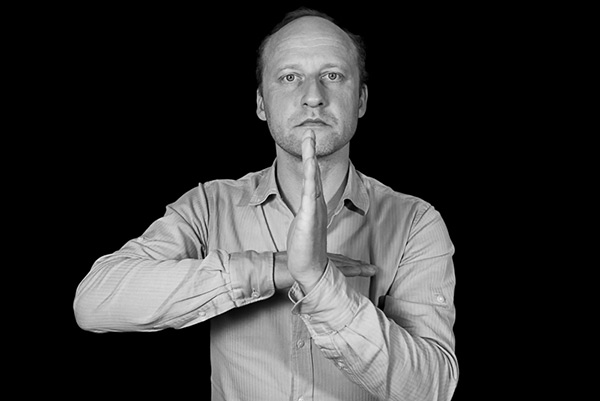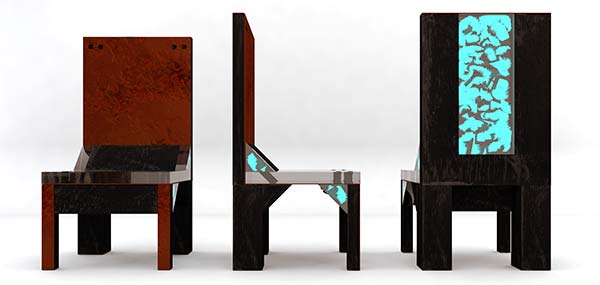The Piece
The work by Thomas Christoph Heyde is based on a complex system which combines musical processes in parity with object design, text interpretation and camera work to form a composed whole.
The Composition
ABENDMAHL is divided into two parts. In the first part, Heyde breaks down Luther’s 95 theses into 430 gestures which are performed by the participants as a choreography. The “Theses” are thus epitomised rather than being just set to music.
In the second part, Heyde uses his text entitled »Vaterunser | Muttermein«, which contains an almost imperceptible encoded version of the famous “Vaterunser” (Lord’s Prayer). This part relates (in a musical sense as well) to a traditional “Vaterunser” choral which Martin Luther himself composed but ultimately discarded.
Four motorised, computer-controlled cameras which move along the table are also part of the complex composition. The camera images display 430 different gestures which are carried out by the participants and projected as portraits onto four screens hanging above the table.

© FZML e.V.
The Basic Text
Martin Luther
Disputatio pro declaratione virtutis indulgentiarum (1517)
14. Imperfecta sanitas seu charitas morituri necessario secum fert magnum timorem, tantoque maiorem, quanto minor ferit ipsa.
15. Hic timor et horror satis est se solo (ut alia taceam) facere penem purgatorii, cum sit proximus desperationis horrori.
16. Videntur infernus, purgatorium, celum differre, sicut desperatio probe deperatio, decuritas differunt.
17. Necassarium videtur animabus in purgatorio sciut minui horrorem, ita ugeri charitatem.
abstract
TC Heyde
»Vaterunser | Muttermein«
Ach Vater,
wo ist unsere gütige Mutter?
Die Kinder, die toten, sie warten im Himmel
und nichts hat dich damals geheilt nach der Schlacht.
Vereidigt werden wir alle
(so auch ich)
Doch können wir lauschen?
Kann dein Ohr noch hören?
Kannst du wieder schwingen und tönen und ahnen und klingen?
Und der Name, die Nummer, ist ein Blech auf der Brust im Gewühl deiner Ahnen und im Reich deiner Lust von der Macht.
abstract
The Table & the chairs
The 95 chairs were specially designed by the artist himself and their dimensions reflect the mathematical proportions underlying the composition. The materials used (wood, tar, rusty metal, feathers and acrylic glass) relate both to the historical context of the Reformation and to the present day.

